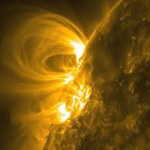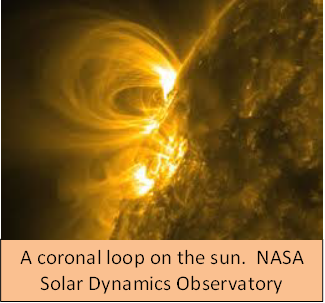I hope you will have a memorable family time over this Memorial Day weekend—and that you remember those who spent their last ounce of courage to defend America and guarantee our liberty. I hope you will commit with us to continue in that same spirit to encourage the powers that be to deal with the existential threat of electromagnetic pulse (EMP) that could literally end our way of life.
There were several notable inputs this past week that encourage an expectation of progress. Consider the following brief summaries, with links to the full publications:
- On Monday (May 20), I was interviewed on two radio shows. The first was with Donna Hearne of the Constitutional Coalition on her St. Louis program (Sorry, I do not have a link to the session.), and I was able to cover EMP issues, hopefully so that her audience could understand the threat and what can be done to deal with it. The second interview was with Dick Morris on his daily radio program, and I had the opportunity to discuss many of the EMP issues included in our recent publications—particularly the threat from Iran that flies over the South Pole to detonate over the U.S. and the possibility of using Aegis sea-based defenses in the near term as a defense against such a threat. Dick was particularly interested in the possibility that space-based defenses could be revived to provide unique capabilities for shooting down ballistic missiles in their boost phase.
- The May 21 Wall Street Journal published an excellent article by Former CIA Director Jim Woolsey and Dr. Peter Pry, who among other things was Executive Staff Director of the EMP Commission that warned the nation on the EMP threat a decade ago. They cued off of the North Korean launch of six short range ballistic missiles earlier this week to emphasize that while these might be threatening to regional stability in the Far East, North Korea actually poses a much more serious threat to the United States, including a nuclear weapon carried over the South Pole to circumvent our missile defenses deployed to defend against ballistic missiles that come at us from over the North Pole. This weapon would be detonated over the United States to produce an EMP that could shut down our electric power grid. Notably, Woolsey and Pry disputed the Obama administration’s position discounting the Defense Intelligence Agency’s view that North Korea currently may have a miniaturized weapon to use in such an attack. Since our current defenses are unprepared to deal with this threat, they advocated that the U.S. be prepared to attack North Korean space launchers on their launch pads, as former Defense Secretary Bill Perry and current Deputy Defense Secretary Ash Carter advocated several years ago.
- Also on May 21, Woolsey testified before the House Energy and Commerce Committee in much greater detail about this threat to the electric power grid. In a rather lengthy hearing on the cyber threat, he noted that such an attack, not considered a cyber threat in Western doctrine, is in the playbooks for an Information Warfare Operation of Russia, China, North Korea, and Iran. Their military doctrines include as a dimension of cyber warfare a wide spectrum of operations beyond computer viruses, including sabotage and kinetic attacks, up to and including nuclear EMP attack. Thus, he argued that nuclear EMP attack should be included in the cyber and information warfare doctrine assumed for potential adversaries, based on the work of the Congressional EMP Commission that analyzed this threat for nearly a decade (2001-2008). The Congressional Strategic Posture Commission and several other major U.S. Government studies independently arrived at similar conclusions, and represent collectively a scientific and strategic consensus that nuclear EMP attack upon the United States is an existential threat. And Woolsey observed that, during the Cold War, Moscow developed a secret Fractional Orbital Bombardment System (FOBS) that used a Space Launch Vehicle designed to carry a nuclear warhead southward—away from the United States initially, but to deliver the warhead on a satellite on a south polar orbit, so the nuclear attack would approach the U.S. from the south. As we have emphasized, he observed that Iran recently launched satellites on just such orbits. Furthermore, he discussed the proliferation pathway—including for “Super EMP weapons”—from Russia to China to North Korea to Iran.
- Also on Tuesday, May 21, The Washington Times published Frank Gaffney’s article on the natural EMP threat—“The night that all the lights go out,” which set the stage for a two day international conference in Washington, DC: the Electric Infrastructure Security Summit, attended by specialists and other interested parties from ten or so nations as well as senior U.S. officials. Click here for the two day agenda and main speakers. Frank’s article gives an excellent summary of some of the problems and the hopes for improvement this year, including a reference to the Shield Act that will again be sponsored this year by the leaders of the EMP Caucus, Reps. Trent Franks (R-AZ) and Rep. Yvette D. Clarke (D-NY). As we have repeatedly noted, this will be the third try to get legislation through both houses of congress—hopefully this year we won’t strike out.
- I was unable to attend this important conference, but the feedback from several friends who did suggests that it was a good exchange and there is growing awareness of the threat, though not much action yet—at least in the U.S. to deal with the key issues. I was impressed that Lloyds of London, a co-sponsor for the Conference, has provided a serious report about how the insurance industry might view the risk and adjust to the possibility of major “solar storms” impacting North America. I was also impressed to learn that the United Kingdom and Israel have assigned a single agency to deal with this problem—a step that the U.S. powers that be might consider to bring focus to the currently dysfunctional U.S. interagency process. As we have repeatedly urged, I believe the Energy Department is a good candidate for taking that leading role—and hope that Dr. Ernest Moniz, our new Energy Secretary, will take the initiative to assume the leadership role.
All in all, this was a good week for those of us trying to get out the word on this important threat—from both manmade and natural causes. But we still have a ways to go before we can rest in getting real measures to deal with what is increasingly clear to many to be a truly existential threat.
Again, to close as I began—I hope you and yours have a pleasant Memorial Day weekend—and that you take the time to thank God for our nation and those who have died to keep us free.
What can you do?
We can use your help in spreading the word to grass roots and local authorities to press the powers that be to provide for the common defense as they are sworn to do. Will you do your part?
Begin by passing this message to your friends and suggest they visit our webpage, www.highfrontier.org for more information. Also, please encourage your sphere of influence to sign up for our weekly e-newsletter!
Flash Message 130524
Please click here to read Past Weekly Updates!
Please help High Frontier continue this important and timely work!
Be sure to follow us on our Social Sites!
If you found this letter via our Social Sites, and you would





